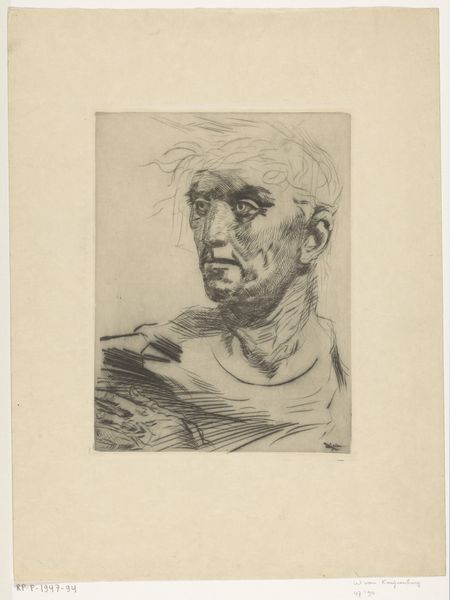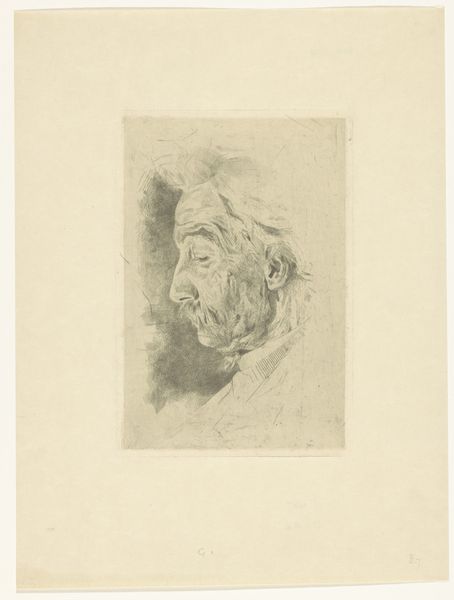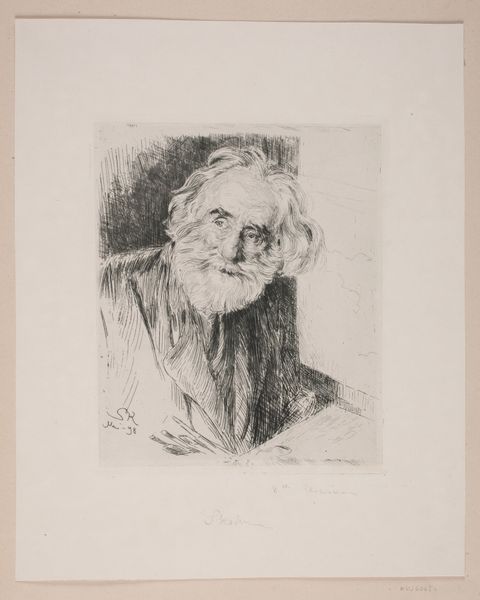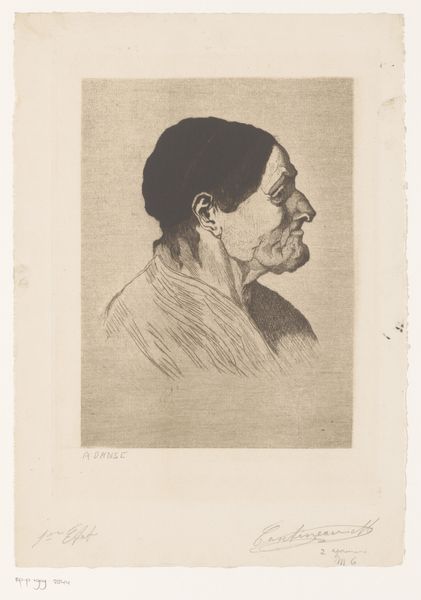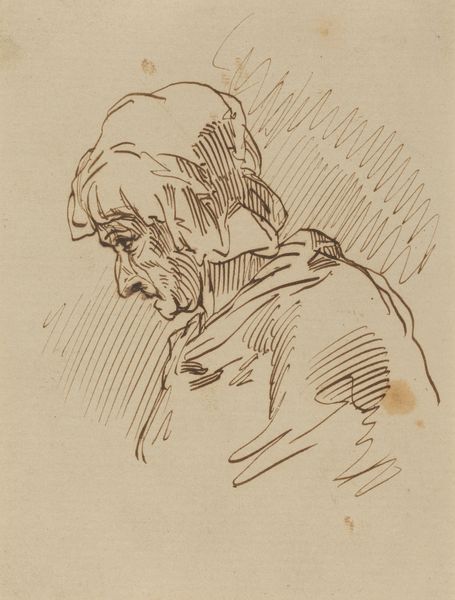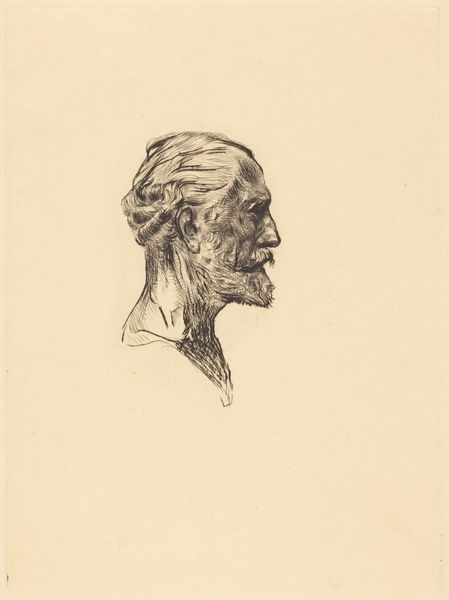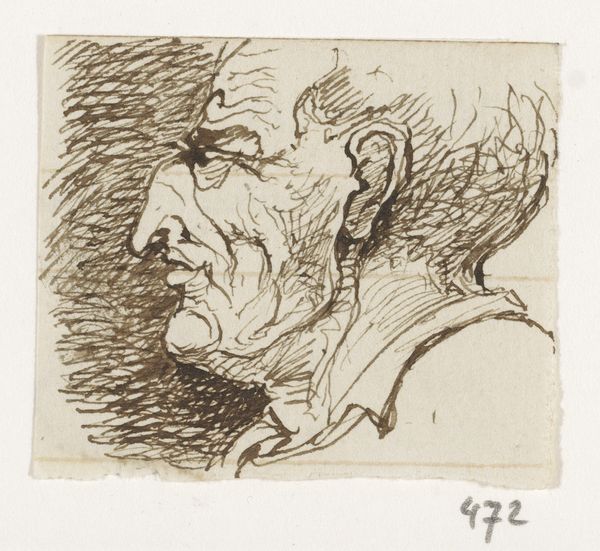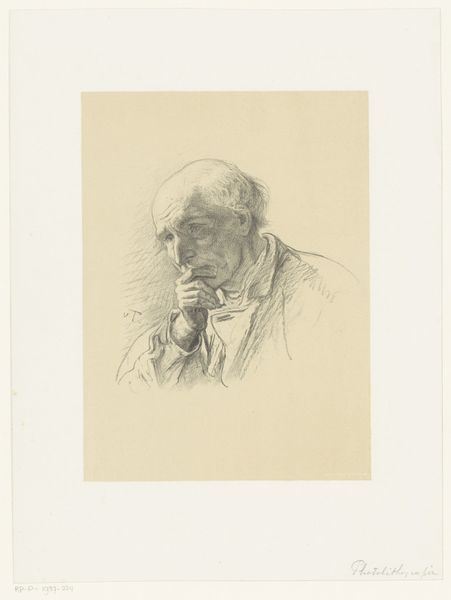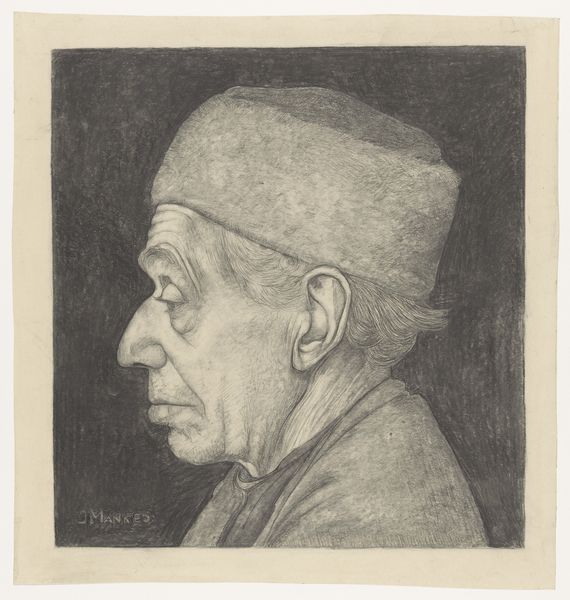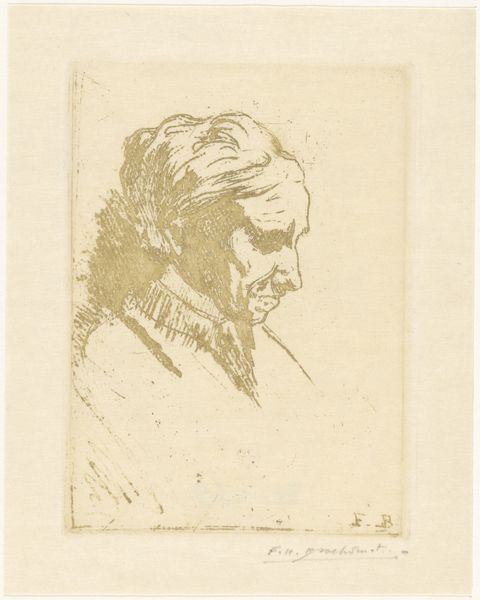
drawing, pencil
#
portrait
#
pencil drawn
#
drawing
#
charcoal drawing
#
pencil drawing
#
pencil
#
academic-art
#
realism
Dimensions: height 248 mm, width 160 mm
Copyright: Rijks Museum: Open Domain
Curator: Here we have "Head of a Figure Leaning Forward" by Josué Dupon, a pencil drawing estimated to be from between 1874 and 1909. Editor: Whoa. It feels like I’m intruding on a very private moment. So stark. Curator: The use of pencil and charcoal gives the piece a compelling texture. It's quite a study in realism, echoing the academic style of the period. Dupon was clearly interested in the minutiae of the human form. Editor: That lean… It’s like he's burdened, almost bowed, under something immense. The artist really captures a sense of… resignation, maybe? Though, I wouldn't want to leap too hastily; it can be quite fascinating as each mark dances to compose his face. Curator: Consider the social context. This era saw increased attention to realistic portraiture. It reflects broader trends in representing individuals and revealing the human condition as unflinchingly as possible. Editor: Mmh, interesting. I keep coming back to the light. See how it kisses just the bridge of his nose, almost illuminating his fatigue. It's poignant! Curator: Certainly. I see it as part of the Realist movement—an interest in genuine, unvarnished life, though one that idealizes structure and representation based on observation. Editor: You know, art always seems to lead me back to human beings: that persistent attempt to communicate what it's like being *us*. All the baggage, long noses and everything! Curator: A concise assessment! To summarize, the Dupon offers viewers insights into representational conventions through its exploration of portraiture and the realistic style. Editor: Right, and for me it's a quiet testament to life’s heft, isn’t it? Definitely gave me something to chew on today.
Comments
No comments
Be the first to comment and join the conversation on the ultimate creative platform.

